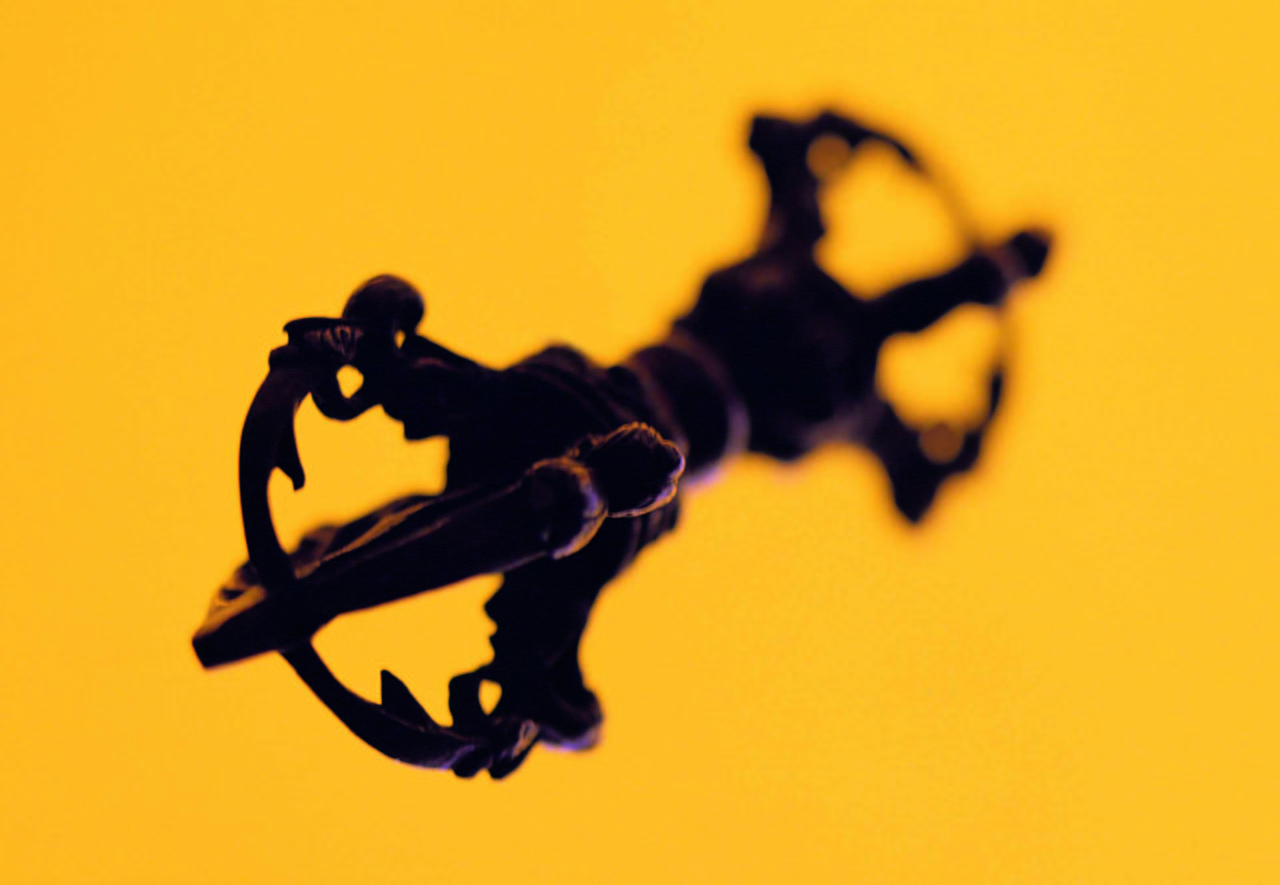Two rival candidates currently claim the position of Karmapa, leader of the Karma Kagyu school of Tibetan Buddhism. The controversy has split the school and prompted a flurry of books describing the conflict. But what is really going on in this dispute, and why have westerners been caught up in it? Here’s a review of three of those books and another exploring western responses to Tibetan Buddhism
The Dance of 17 Lives: The Incredible True Story of Tibet’s 17th Karmapa by Mick Brown
Karmapa: the Politics of Reincarnation by Lea Terhune
Wrestling the Dragon: In Search of the Boy Lama Who Defied China by Gaby Naher
Re-Enchantment: Tibetan Buddhism Comes to the West by Jeffrey Paine
Reviewed by Vishvapani, first published in The Times Higher Education Supplement
In 1959, listening to reports of the suppression of the Tibetan uprising, Chairman Mao interjected, “But what about the Dalai Lama?” Hearing he had escaped, Mao groaned, “In that case we have lost.” Mao was wrong in that Chinese rule of Tibet has never since been seriously threatened, but perhaps in another sense – in the battle of ideas – he was right. The Tibetans who survived the Cultural Revolution still love their lamas and cherish their Buddhist faith, and in exile Tibetan teachers eventually discovered a huge and growing new constituency among unchurched yet spiritually dissatisfied westerners. Buddhist teachings, especially as articulated by the Dalai Lama, are increasingly regarded by many in the West as sound advice on how to live happily and wisely. Who, following the horrors of its implementation, says the same of Maoism?
Variously designated “Living Buddha”, religious exemplar, feudal hierarch, and global icon of non-violence and inclusive spirituality, the Dalai Lama is the key to Tibetan loyalties and the tradition’s wider appeal. Above all, he is the exemplary tulku – an individual identified as the reborn manifestation of a spiritually advanced practitioner who directed his or her rebirth ‘for the benefit of living beings’ and therefore inherits the predecessor’s position. Westerners have been fascinated by tulkus since Mme Blavatsky first contacted her Himalayan Masters, attracted perhaps by the paradoxical combination suggested by Geophrey Samuel’s term “civilised shamans”. Tulkus offer accessible meditation practices and compelling teachings but augment these with the pre-modern glamour of prophecy, divination and miracles.
Jung noted the power for westerners of Tibet’s symbolic appeal, but thought that Asian archetypes were alien to the European psyche. Such volkisch-ness is outmoded, but later commentators such as Peter Bishop and Donald Lopez have explored how Tibetan Buddhism’s meaning changes in a new culture. In feudal Tibet tulkus formed a religious counterpart to the hereditary aristocracy, and Tibetans learned to navigate the system’s contradictions, regarding tulkus as emanations of Buddhas whilst knowing that they frequently engaged in political feuding so byzantine that westerners are often warned to stay out as they will never fathom the issues.
Most western responses to Tibetan Buddhism are innocent of such paradoxes, however, and popular accounts of encounters with the tradition and its tulkus, such as the books under review, tend to idealization or bemusement. Three of them concern the controversy surrounding the recognition of one of the most important tulkus, the Karmapa, the leading figure in the Kagyu school, which broke onto the front pages in 2002 when the fourteen-year-old Urgyen Thinley, recognised by the Dalai Lama and the Chinese alike as the Seventeenth Karmapa, slipped his guards at the monastery in Tibet to which he was confined, and escaped across the Himalayas. He emerged into a media storm, a diplomatic spat between India and China, and the escalation of a dispute between the regents charged by the Sixteenth Karmapa to identify his tulku. A bitter disagreement had developed, with Urgyen Thinley’s supporters and two of the regents on one side, and on the other the third regent – the Sharmapa – who had identified his own candidate. So acrimonious was the dispute that when a fourth regent died in a car crash accusations of foul play abounded.
The books by Mick Brown and Lea Terhune are enjoyable and informative, though Gaby Naher’s is weaker, but none of them matches the standard set by Isabel Hilton’s account of a parallel controversy, The Search for the Panchen Lama, which mixed investigative journalism, political commentary and history with sharp intelligence. Where she was both intellectually vigorous and sympathetic to the individuals involved, none of these books is wholly equal to this complex and beguiling territory.
Gaby Naher hoped to write an account of a personal connection with Urgyen Thinley (about whose status as Karmapa she has no doubts). But the young man seems to have been more concerned with his Buddhist studies, and granted her only fleeting interviews. She is reduced to describing her admiration for the hawk-eyed “Tibetan Keanu Reeves” and her misadventures en route. Naher is an activist for Tibetan independence who wants to promote the cause by promoting ‘the Karmapa’. But this is idealization at its most instrumental and naïve, and it renders her oblivious to the power-struggle that surrounds the Karmapa succession.
Lea Terhune’s book is more sober and more searching, indeed it is the most factually informative on the three in its account of Tibetan history, the Karmapa lineage, and the current dispute. It offers a helpful presentation of the issues, but it is avowedly partisan, being written by a journalist who is also a long-time Kagyu practitioner and a disciple of Urgyen Thinley’s teachers. In particular it fails adequately to address the Sharmapa’s case or his accusations against his opponents. It does, however invoke some of the complexities of ‘the politics of reincarnation such as the power-vacuum that threatens when the Dalai Lama’s retires or dies. After him, who will offer leadership for Tibetans in Tibet and in exile? Who will maintain the Tibetans’ global profile? And who will fill the gap in the western psychic economy?
Urgyen Thinley’s potential to do this becomes increasingly apparent in The Dance of 17 Lives as Mick Brown describes his growing admiration. Brown is one of the few capable British writers addressing religious or spiritual themes in a n intelligent, popular vein. As in his previous book, The Spiritual Tourist, Brown foregrounds himself as a sympathetic but sceptical investigator, who eloquently describes his encounters with the protagonists – to whom he gets commendably close – and his own wary responses. This is a thoughtful, readable work and Brown’s unaffiliated stance frees him to explore the disputes complexities, although one senses that he is just touching its surface. He is best at evoking the drama of the Tibetans’ religious politics and its impact on westerners. When the Sharmapa first told a largely western audience his belief that Urgyen Thinley’s sponsors were engaged in a giant political game, Brown writes, “there was an audible intake of breath. It was the sound of illusions shattering. Could the Sharmapa possibly be accusing another high lama of lies, forgery, a massive act of deception?”
Each of these books leaves one with the sense that the Sharmapa is a troublesome politician while Urgyen Thinley is the ‘real’ Karmapa. But to draw such a conclusion requires accepting the Tibetan wordview within which a Karmapa can be considered ‘real – complete with directed rebirth, and a quasi-feudal spiritual hierarchical. Only Brown seems aware of the difficulty this prompts – or should prompt – for outsiders to this worldview. Going further still, while the Sharmapa’s western listeners leapt into the dispute on behalf of their candidate (and they have already posted lengthy rebuttals of Brown’s and Trehune’s books on the internet) this story prompts one to ask: if tulkus can behave this way then why are they worth revering as “living Buddhas”? And, while Buddhism has much to offer westerners, how on earth have they found themselves involved in all this?
It is clear from the characters described in Re-Enchantment: Tibetan Buddhism Comes to the West that similar questions have already been exported to the West. There is Jetsunma, the Brooklyn housewife turned New Age teacher who was identified as a tulku and has attracted both controversy and devotion. And there is Stephen Seagal, the Hollywood action movie star whose identification as the rebirth past teacher prompted derision and allegations of corruption. But while Jeffrey Paine’s portrait of Tibetan Buddhism in the West is part-phantasmagoria, it is also part-celebration. He describes remarkable characters such as Tenzin Palmo, the English nun who spent a decade meditating with fierce intensity in a Himalayan cave, and Jarvis Masters who writes powerful accounts of his life as a Buddhist on Death Row. Re-Enchantment is an excellent introduction to the phenomenon of Tibetan Buddhism’s arrival in the West, suitable for students of contemporary religion and for general readers. Most of the stories are familiar, but Paine tells them with elegance and erudition, adding considerable extra research.
It is too easy to dismiss western practice of Tibetan Buddhism along the lines of Jung’s comment that “yoga in Mayfair or Fifth Avenue, or in any other place which is on the telephone, is a spiritual fake”. Tibetan Buddhism is not snake-oil, and, as Re-Enchantment shows, its effect on North America has been substantial and far-reaching. But its insights and practices are expressed through symbols and embedded in shamanistic beliefs and practices. These are a considerable part of Tibetan Buddhism’s appeal, but they are not what it most has to offer outsiders and, as the Karmapa dispute shows, taking the whole Tibetan package involves one in ancient and essentially irrelevant contentions. When telephones and telepathy collide we need guidance; Mick Brown and Jeffrey Paine are engaging fellow-travelers, but neither has a map, and on this evidence we are only just starting to disentangle what the Tibetans brought with them out of their long seclusion.
The Dance of 17 Lives
The Incredible True Story of Tibet’s 17th Karmapa
By Mick Brown
Bloomsbury, 288pp, £16.99 h/b
ISBN 0 7475 7161 9
Published 2004
Karmapa
The Politics of Reincarnation
By Lea Terhune
Wisdom, 308pp
ISBN: 0 86171 180 7
Published 2004
Wrestling the Dragon
In Search of the Boy Lama Who Defied China
By Gaby Naher
Rider, 294pp.
ISBN: 184413231 1
Published 1 October 2004
Re-Enchantment
Tibetan Buddhism Comes to the West
By Jeffrey Paine
Norton, 261pp. h/b
ISBN 0 393 01968



There is a beautiful film about 17th Karmapa called “Living Buddha”, on the Buddhist Door website:
http://video.buddhistdoor.com/movie/play_movie_view_eng/515
This is a most helpful guide to the literature about the Karmapa controversy. Thank you.
This is obviously a very biased review, since it makes no mention of Erik Curren’s excellent book Buddha’s Not Smiling.
The book you mention was published in 2014. This review was posted in 2013 and the review itself was published in the Times Higher Educational Supplement in 2004. So not biased.